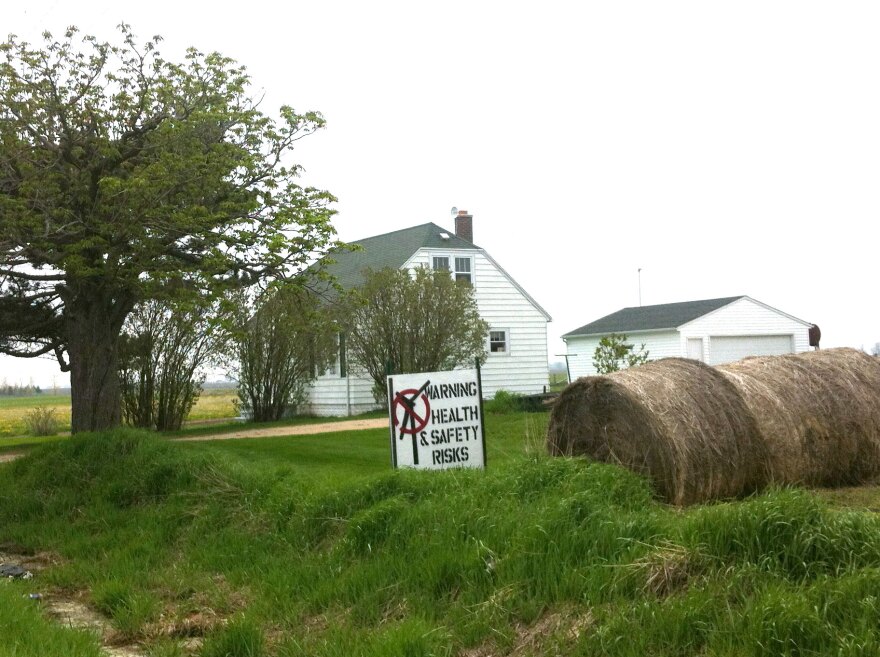Wisconsin has been a leader in some aspects of the green energy movement.
For example, this month’s renewable energy fair in Custer is the longest running energy education event in the U.S.
Focus on Energy, the utilities’ program to make homes more efficient, prodded other regions to do the same.
However, green energy also stirs opposition, because of the cost and impact on traditional providers.
State leaders began dipping their political toe into renewable energy, in the late 1990s. At the time, Wisconsin realized its power grid was too small to keep up with growing demand.
Keith Reopelle works for the group Clean Wisconsin. He says the Legislature required electric utilities to begin using renewable sources, such as wind or biomass.
“Wisconsin was one of the first states to create a renewable energy standard. In 2000, a very modest renewable energy standard of 2.2 percent,” Reopelle says.
Utilities met the standard in record time, so in 2004, Democratic Gov. Jim Doyle convened a Task Force on Global Warming to suggest ways of increasing the state’s commitment to renewables.
Reopelle served on the panel. It recommended that 10 percent of all electricity in the state come from green sources by 2015. The Legislature agreed.
Reopelle says it was becoming increasingly evident Wisconsin should cultivate local fuels including from farm waste and solar.
“Wisconsin doesn’t have any fossil fuels in the ground here. We don’t have any coal or natural gas or petroleum in the ground and so we spend a lot of money every year importing those fuels, it’s actually more than $12 billion,” Reopelle says.
The Legislature also required utilities to create the program, Focus on Energy. It helps customers make energy improvements, such as installing insulation.
Democrats increased funding for the program in late 2010, as they were leaving office. When Republicans swept into both houses, along with Gov. Walker in 2011, they cut funding. Joint Finance co-chair Robin Vos presided over deliberations.
“We spend about $100 million on Focus on Energy, a program that helps consumers and businesses to save money. But at a time when we see so many families are struggling, we did not want to increase utility rates to fund increases to the program,” Vos says.
This year, another political battle is brewing over wind power. Brian Manthey is spokesman for WE Energies. He says of its renewable options, wind has become most popular.
The utility owns the two largest wind farms in the state; one in Fond du Lac County, the other in Columbia County.
“We looked at wind first because it was probably going to give you the most energy per project at the time,” Manthey says.
However, some people are complaining about the noise the turbines generate, and the pressure. Republican Sen. Frank Lasee has been leading a crusade against a growing number of wind farms in his district.
“These are 50 story wind towers. They’re 500 feet tall, they’re very large and I think it’s the low frequency sound that’s making people sick,” Lasee says.
Lasee says he’s drafting a bill to allow people to sue the owners of wind turbines, if they cause adverse health effects or force families to move.
Another energy issue that might come before Wisconsin lawmakers is “third party” ownership. Elizabeth Hittman heads the Milwaukee office of the Midwest Renewable Energy Association. It’s circulating petitions calling for Wisconsin to legalize third party ownership.
Hittman says it would allow companies to supply people with alternative power – say, solar.
“You would buy your energy from the company, and the company would own the panels. Whether you’re a business owner or a homeowner, the company would come and install panels on your roof and you would buy the energy from them, rather than the utility. Ideally, you’d be paying less than you’d be paying the utility, for electricity,” Hittman says.
Hittman says third party ownership is not illegal in Wisconsin, but is also not explicitly legal, so no companies are yet taking the chance. State leaders set energy policy.
Right now, Republicans hold control, and leaders seem to subscribe to ALEC’s perspective, the American Legislative Exchange Council. Its members include traditional energy producers – coal and oil.
ALEC states that government should not be in the business of picking energy winners and losers or imposing renewable mandates on utilities. GOP Sen. Glenn Grothman says he hopes Wisconsin does an about face and scales back its requirement from 10 to five percent.
“It would be great to go back to a five percent goal. I think you’re going to be fighting the powerful utilities that have already invested in alternative modes of energy and the utilities would not want to drop,” Grothman says.
As for how Wisconsin compares with its neighbors: Michigan’s standard for renewables is also ten percent by 2015. Minnesota and Illinois are reaching for 25 percent by 2025. Iowa is going for 40 percent by 2020.



